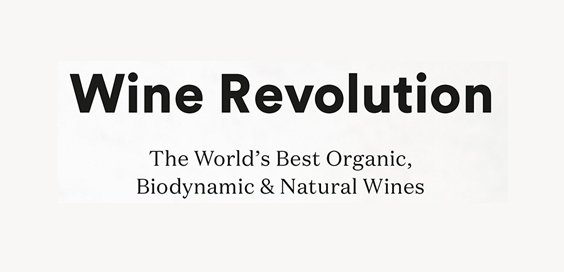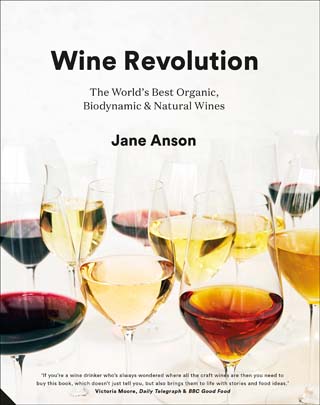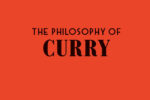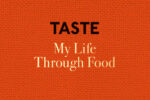Wine Revolution by Jane Anson – Review

By Paul Howard
When I started to focus on organic and biodynamic wines a decade and more ago, they were dismissed by conventional wisdom. According to this, they employed daft doctrines. Furthermore, they were only from a handful of winegrowers that had lost touch with reality. Well, so much for conventional wisdom. Naturally, I became fascinated and remain so.
Indeed, many of these hand-crafted authentic wines are those I enjoy most. In the intervening years, this revolution in winegrowing, its growth, and market acceptance has continued apace around the world. How times change!
Jane Anson’s new book selects 250 of the best examples. Refreshingly, it goes further than that. There are pen portraits of the winegrowers, tasting notes and an excellent glossary and index. I particularly like the inclusion of food pairing recommendations from top sommeliers. Each entry has bottle labels and excellent photography. Indeed, this hardback book is nicely packaged, with heavyweight paper used throughout the 256 pages. The writing style is accessible and punchy, making the book easy to read and assimilate. I also like the lack of dogma and doctrine.
 “Best examples”
“Best examples”
Hence this book is about wines with a sustainable future that capture time, place and culture in your wine glass. So you’ll also find entries on orange wines and low intervention wines beside those that are specifically organic and biodynamic. While the “natural” wine movement is an ill-defined term, care has been taken to select many of the best examples. So they taste great too.
Indeed, it must have been difficult to restrict the choice to keep the book manageable. I was delighted to see many of my favourites; such as Felton Road, Josmeyer, Fontodi, Gauby, Querciabella, Fasoli Gino, Musar, Inglenook, Cristal, Colomé, and a whole lot more. All the selections made in the book have long track-records, so it shouldn’t become outdated too quickly.
It’s also refreshing to find Chinese wines, such as Wang Zhong (Tiansai) included, which is now on my discovery hit-list. Be in no doubt; China has great potential. Doubtless, we’ll be seeing a lot more high-quality Chinese wines in the years ahead.
Hence it’s perhaps unfair to point out any omissions. However, not including the hugely influential Josko Gravner does seem like an oversight.
“Makes total sense”
I would have also liked to have some broad price indications given for each entry. The perception of these wines is still that they are expensive, which is not always the case. Those minor quibbles aside, all those here have the wow factor in spades.
The way the wines are curated also makes an innovative and refreshing change. It would have been easy just to set them out by country. However, given the books food matching topic, the logical way is to set them out by wine style. Hence you’ll find them grouped by themes such as “sparkling and fresh, crisp whites” or “full and warming reds”. While that is less familiar, it makes total sense to me.
Only the inclusion of a short section on wine cocktails hits a jarring note. I don’t feel it sits well in this book. Using such excellent wines as a cocktail ingredient seems to me both unlikely and heretical.
In short, whether you are a newbie to the subject or not, there’s much to discover and enjoy. Wine Revolution comes highly recommended.
It makes an ideal primer on the subject of Organic, Biodynamic and Natural wines. Some wine lovers will find it’s all they’ll ever need. Reading it, you might ask why you’d want to drink anything else.
‘Wine Revolution’ by Jane Anson is published by Jacqui Small Publishing. Hardback, £25









